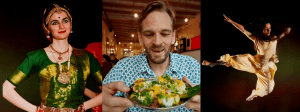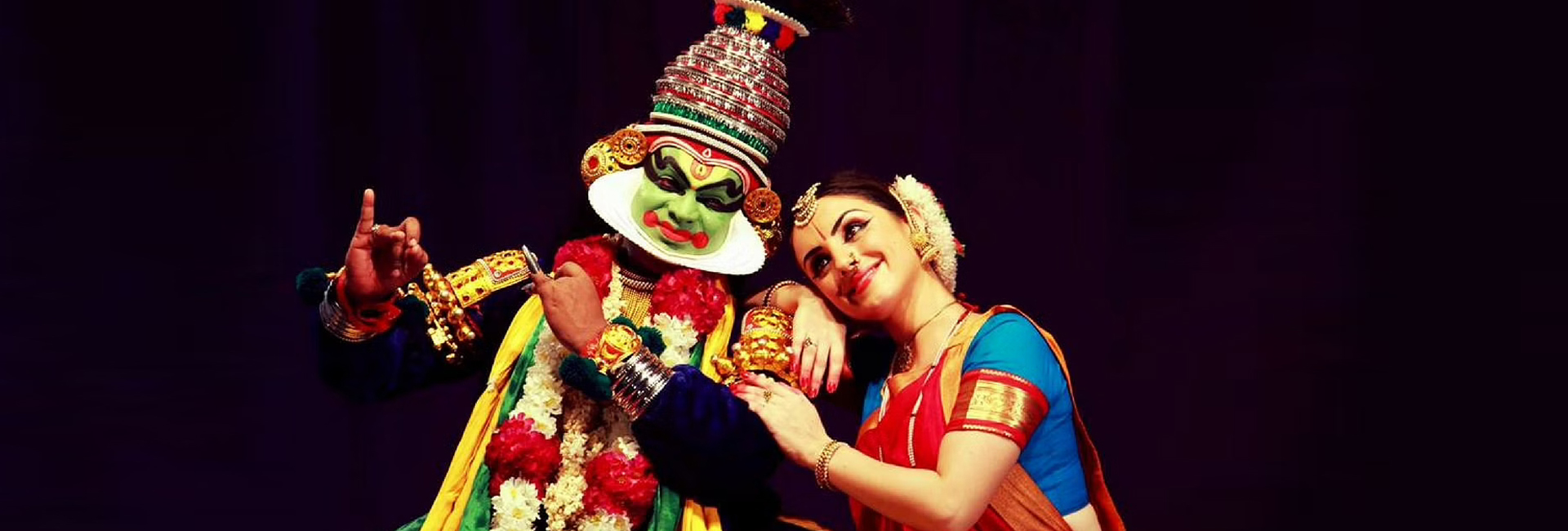(October 7, 2024) Reshma Rajeev’s story is one of dedication and cultural preservation, a tale that began in the lush landscapes of Kerala in India, and found its way to the Caribbean shores of Trinidad and Tobago. A Bharatanatyam dancer, teacher, and cultural ambassador with the Mahatma Gandhi Institute for Cultural Cooperation, Reshma Rajeev left behind a career in media to follow her passion for this classical Indian dance. Her journey has since blossomed into a mission that connects the Indian diaspora in Trinidad and Tobago with their roots, celebrating the timeless artistry of Bharatanatyam.
Beginnings in Kerala: The seed of a dream
Born and raised in Kerala, Reshma grew up in a family that valued education and tradition. While the challenges of a middle-class upbringing brought their own set of limitations, she was captivated by the allure of Bharatanatyam from a young age. “No matter your background or the level of support you receive, embrace your passion and work hard for your dreams,” the Global Indian said.
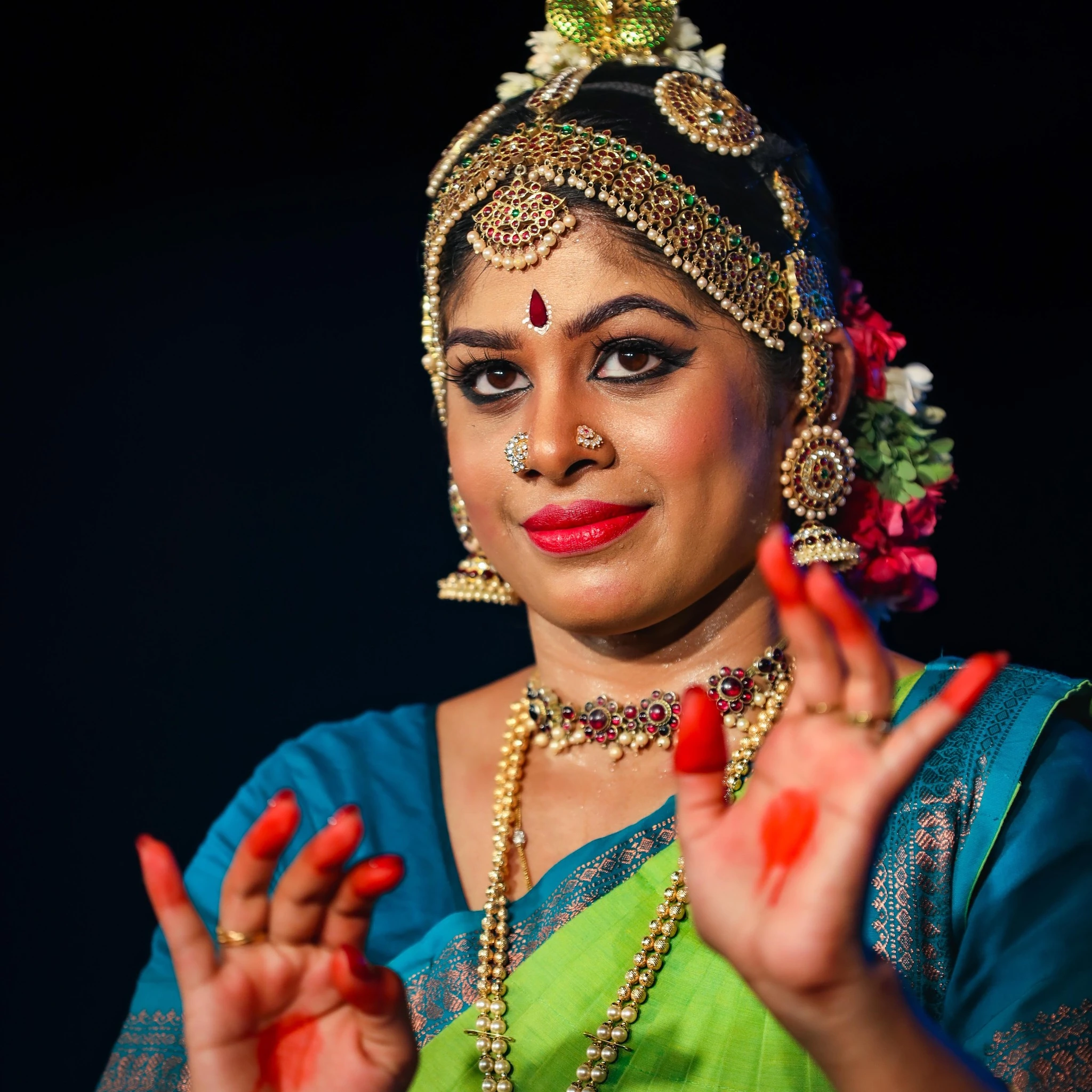
Reshma Rajeev
After earning a degree in English Literature and Mass Communication, Reshma began a promising career in media, but something was missing. The artistic fire that Bharatanatyam had ignited in her youth continued to burn, urging her to take a risk, abandon her secure job, and dive fully into her passion for dance. With determination and grit, she enrolled in the Kalakshetra Foundation in Chennai, an institution renowned for its dedication to Indian classical arts and culture. Immersed in the rigorous training and spiritual philosophy of Bharatanatyam, she found her calling. She went on to earn a Master’s in Bharatanatyam from the University of Madras, further refining her skills and deepening her understanding of the art.
This journey through Kalakshetra and the University of Madras would shape her not only as a dancer but as a teacher and cultural advocate. Bharatanatyam became more than just an art form to her; it was a lifeline connecting her to her heritage and traditions. It was here, in the dance halls of Chennai, that the idea of sharing this treasure with others began to take root.
Trinidad and Tobago: New shores, familiar rhythms
Two years ago, Reshma’s path led her across the seas to Trinidad and Tobago, a land where the Indian diaspora has a deep and storied presence. Reshma’s work is deeply connected to the broader story of the Indian diaspora in Trinidad and Tobago. Indian migration to the island began in the 19th century when British colonial authorities brought indentured labourers from India to work on the island’s sugar plantations. Between 1845 and 1917, tens of thousands of Indians, mainly from Uttar Pradesh and Bihar, journeyed across the seas, carrying with them their language, religion, customs, and traditions.
Despite the hardships of plantation life, these early Indian communities preserved their cultural identity, establishing temples, practicing their faiths, and celebrating their festivals. Over generations, the diaspora has become a vibrant part of Trinidad and Tobago’s social fabric, with descendants making up approximately 40 percent of the population currently. Today, the Indian cultural heritage remains strong and is celebrated with enthusiasm through festivals like Diwali and Holi, while traditional music, dance, and classical arts continue to thrive across the island. “The locals appreciate the richness of Indian culture which includes traditional music dance festivals and celebrations.”
For Reshma, arriving in Trinidad and Tobago was both a cultural shock and a homecoming of sorts. She discovered a unique blend of Indian and Caribbean traditions, finding familiar flavours in the food, strains of Indian music in Trinidadian melodies, and traces of Indian spirituality in local religious practices.
“Since coming here, I’ve been amazed by the cultural similarities. Everything we need, we can find here – from temples to music, there’s a piece of India in every corner.”
She joined the Mahatma Gandhi Institute for Cultural Cooperation, an organisation committed to strengthening Indo-Caribbean ties. In her role as a dance instructor, Reshma has become a bridge between two worlds, introducing students in Trinidad to the grace and spirituality of Bharatanatyam. Through the Institute, she teaches Bharatanatyam alongside other Indian classical arts, including tabla, harmonium, Hindustani music, yoga, and even the Hindi and Sanskrit languages. Her goal is simple yet profound: to give the Indian diaspora and others a place to connect with Indian traditions and cultivate a sense of identity and belonging.
Ananthara Space of Arts: A cultural haven
Driven by her passion for sharing Bharatanatyam, Reshma Rajeev founded Ananthara Space of Arts in Trinidad. What began as a small dance academy has blossomed into a cultural haven for both people of Indian origin and anyone in Trinidad interested in exploring Indian classical arts. “The academy has become more than just a place for dance,” Reshma explained. “It’s a gathering spot, a sanctuary for those who want to reconnect with or learn about Indian culture.”
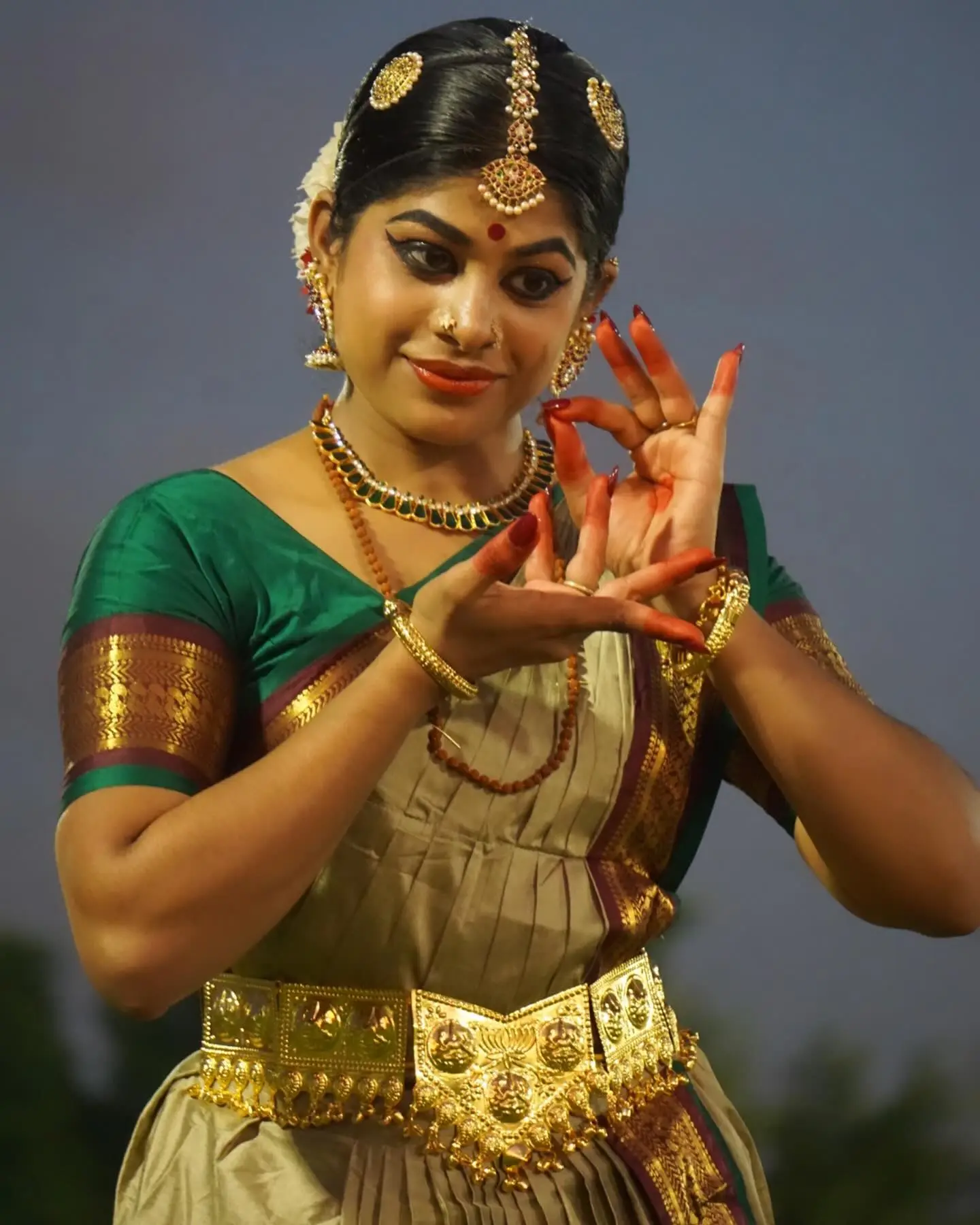
Through Ananthara, she has hosted over 30 online workshops and numerous offline events, reaching students across the globe. Each year, these students come together to showcase Bharatanatyam, expressing the beauty, depth, and spirituality of the dance form. For many Indian-origin Trinidadians, Ananthara provides a precious connection to their roots, allowing them to delve into the stories, symbols, and spiritual meanings that Bharatanatyam encapsulates.
As a classical dance, Bharatanatyam goes beyond mere performance. It’s a form of storytelling, rich with expressive hand gestures, intricate footwork, and spiritual symbolism. Originating in Tamil Nadu over 2,000 years ago, Bharatanatyam was initially performed in temples as a sacred offering to the gods. Today, it remains a vital expression of Indian spirituality and history, bridging the ancient with the contemporary, the physical with the metaphysical. “In every step and every gesture, there is a story, a connection to something bigger,” Reshma added.
Fostering cultural connections and identity
Reshma’s impact is not limited to the dance studio. Through the Mahatma Gandhi Institute, she plays a key role in fostering cultural cooperation between India and Trinidad and Tobago. This includes promoting language studies, such as Hindi and Sanskrit, and offering classes in traditional Indian instruments and music. The Indian High Commission in Trinidad and Tobago often collaborates with her to arrange cultural events and workshops, further strengthening the bonds between the two countries.
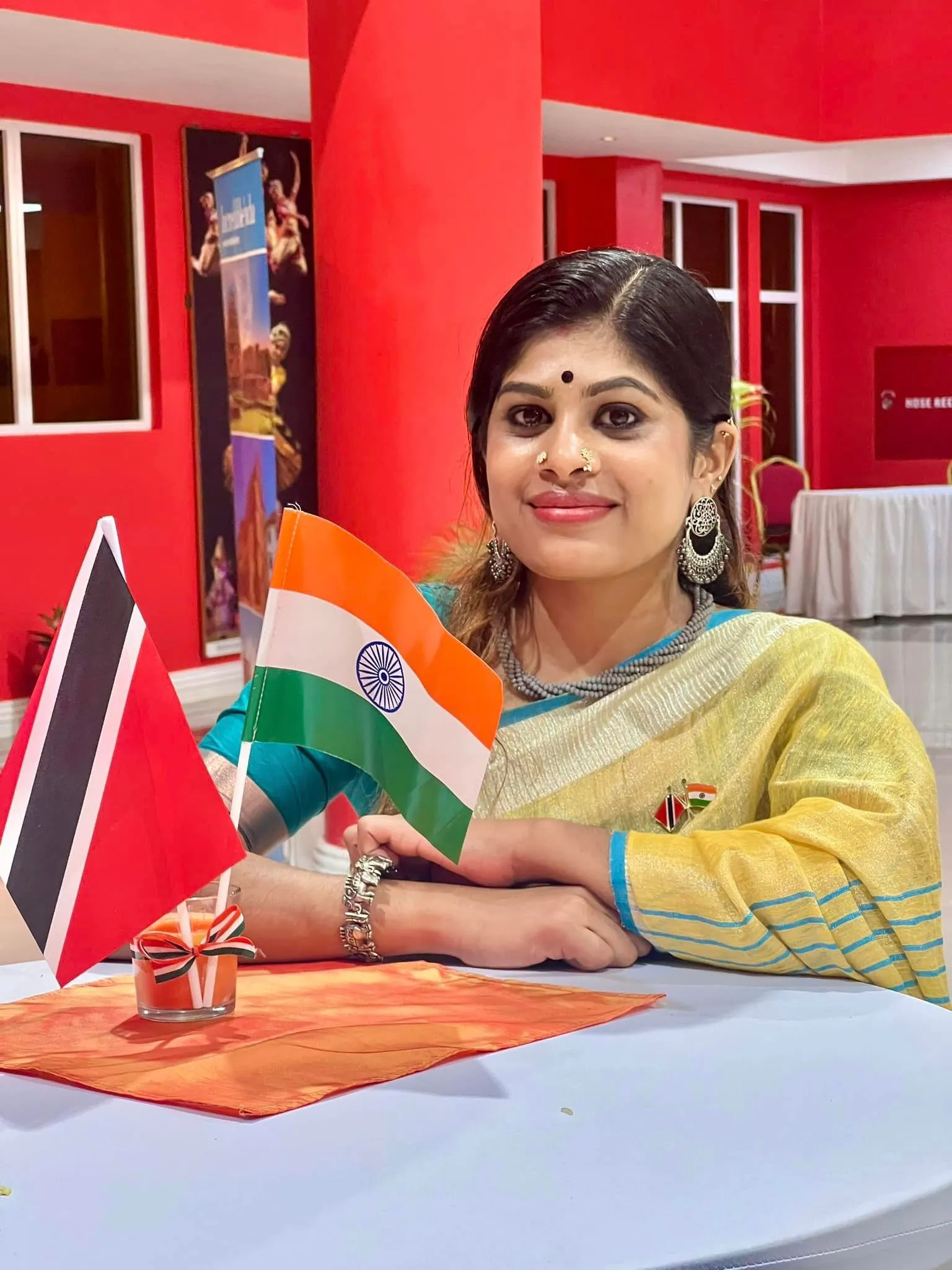
For many members of the Indian diaspora in Trinidad, Reshma’s classes offer more than dance instruction; they provide a sense of cultural continuity, a reminder of the values and practices passed down through generations.
“The Indian diaspora here celebrates all cultural festivals – Diwali, Navratri, Dussehra, Eid. It feels as though we’re back in India. Through these shared experiences, we create a community, a family that extends beyond borders.”
Through Bharatanatyam, Reshma Rajeev helps the Indian diaspora to maintain a deep-rooted connection to their heritage, while also introducing Caribbean students to the intricacies of Indian culture. Her dance students are as diverse as Trinidad itself – Indian, Afro-Trinidadian, and others who simply wish to experience the beauty of Indian classical dance. For Reshma, this diversity is a testament to Bharatanatyam’s universal appeal. “This dance form has a language that speaks to everyone. You don’t need to be Indian to feel its spirit,” she reflects with pride.
An artistic legacy and personal calling
For Reshma Rajeev, teaching Bharatanatyam in Trinidad is more than a profession; it is a calling that resonates deeply with her sense of purpose. Through her teachings, Reshma is cultivating the next generation of cultural torchbearers, passing on a legacy that spans continents and centuries. Her journey from Kerala to Trinidad and Tobago exemplifies the power of art to bridge gaps, heal divides, and foster understanding between different cultures. For her students, Bharatanatyam is more than just a dance form – it is a medium of self-expression, a doorway to spirituality, and a lifeline to their ancestral past. “Through Bharatanatyam, I’m able to give back to the world, to share something that has been cherished for centuries.”
In the quiet moments between classes, as she watches her students practice the rhythmic footwork and expressive gestures of Bharatanatyam, Reshma knows that her work is making a difference. She has brought a piece of India to Trinidad and Tobago, not just in the form of dance but in the form of a bridge that connects two cultures, two histories, and two peoples. In her heart, Reshma is not only a dancer but a guardian of heritage, a storyteller, and a keeper of tradition, who will continue to inspire with each graceful step.
In Trinidad and Tobago, where cultures converge in a unique and vibrant harmony, her work with Bharatanatyam offers both a window into India’s rich past and a bridge toward shared understanding. Reshma’s journey inspires not only the Indian diaspora but also people of diverse backgrounds to embrace their heritage with pride, to pursue their passions relentlessly, and to cherish the shared beauty of cultural exchange. Through her art and teaching, she reminds the Trinidadian community—and beyond—that the world grows richer when we celebrate our unique identities together.
- Follow Reshma Rajeev on Facebook



